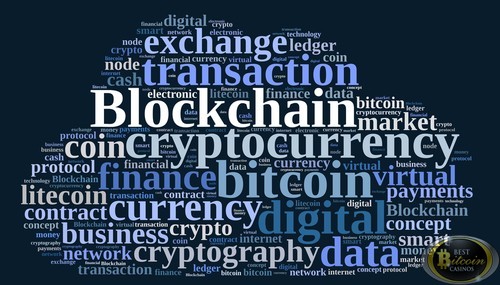Can Bitcoin outrun Blockchain?
Just as the analogy, above, depicts the relationship that these two virtual entities have with one another, Bitcoin’s transactions may increase, their price index may soar, but with every new network connection, tracks are being laid down simultaneously. This is because each link is comprised of any given, current, network connection’s transactions. Those, from that connection, create a link, or block. When another entity joins the network, and makes their own transactions, another link, or block, is added to the chain. These links, or blocks – or ‘tracks’, if you will? – all run in a linear and chronological path. A train cannot run, at least not very far, without tracks.
Blockchain’s growing database.
It is true that Blockchain is becoming an enormous, virtual warehouse of finacial data; however, it cannot grow larger, or faster than it’s creator (Bitcoin). To suggest that these two, massive entities, may somehow exceed the other is simply naive thinking. The real issue, or question, is: What are the opportunities, that may pose themselves, in harvesting that data?
Side-cars for both Blockchain and Bitcoin.
Cunning minds are always at work, searching for ways to manipulate data, systems, practices and philosophies. Just take, for example, the notion that some politicians have brainstormed over – they are trying to subvert donation limits, by using Bitcoin. Brilliant? You can decide. In a virtual world, they are not accepting cash. In reality, they have money to spend.
Bitcoin miners use the Blockchain to compile transactions, using difficult computations, then create what are known as rewards, for themselves. Theoretically, the mined data can also be used to control tansactions, limit confirmations, and even halt payments.
All is fair…
Because the Blockchain is generated in a chronological sequence, the possibility for spending Bitcoin twice, or recreating holdings, is virtually impossible, and if it were a possibility, the next network user would quickly reject it. Thus, although Bitcoin and Blockchain have the inability to out-grow one another, there are alternative – perhaps specious – routes in gaining from both of them. Perhaps the argument, over which one is the mightier, should be turned to, “How can they work together to prevent sophisticated, miscreants from beating them both?”










